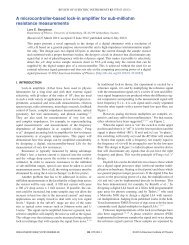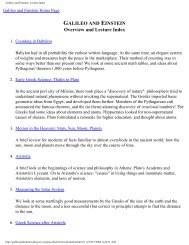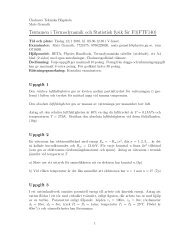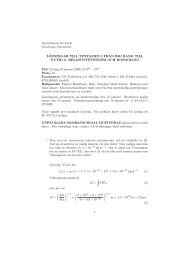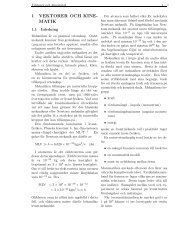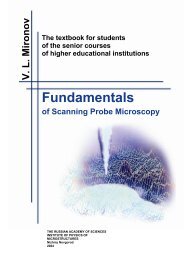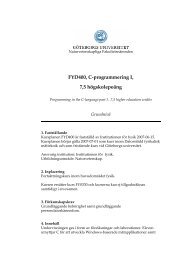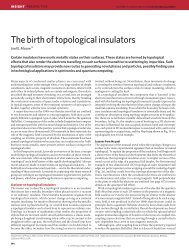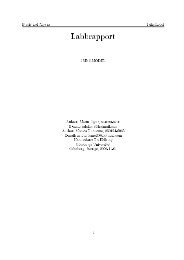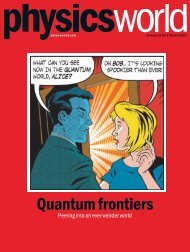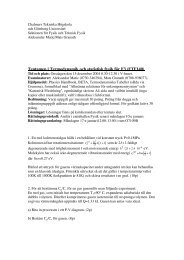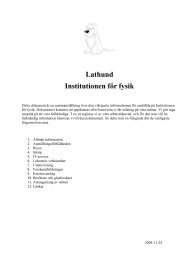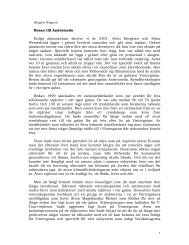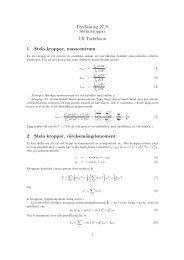Band model of the graphene bilayer
Band model of the graphene bilayer
Band model of the graphene bilayer
You also want an ePaper? Increase the reach of your titles
YUMPU automatically turns print PDFs into web optimized ePapers that Google loves.
25EeV0.040.030.020.010-0.1 -0.05 0 0.05 0.1k eV(a)EeV0.0080.0060.0040.0020-0.04 -0.02 0 0.02 0.04k eV(b)Figure 3·5: Comparison between <strong>the</strong> bands obtained from <strong>the</strong> full Hamiltonianin Eq. (3.1) and those <strong>of</strong> <strong>the</strong> effective <strong>model</strong> in Eq. (3.8) alongdifferentdirections in <strong>the</strong> BZ. Solid line – [φ =0,Eq.(3.1)],Dash-dottedline–[φ =0,Eq.(3.8)],Dashedline–[φ = π/6, Eq. (3.1)], Dotted line –[φ = π/6, Eq. (3.8)]. (a) Larger energy scale. (b) Zoom in at low energies.extra band crossings in <strong>the</strong> directions φ =0andφ = ±2π/3 whichgivesrisetoellipticalDirac cone 3 away from <strong>the</strong> point p =0. Thisstructureispresentatasmallenergyscale<strong>of</strong><strong>the</strong> order <strong>of</strong> ∼ 1meV, <strong>the</strong>refore experimental probes that are sensitive to this energy scaleare necessary to be able to detect <strong>the</strong>se features. Moreover, as we will see in Chapter 5,different forms <strong>of</strong> disorder can easily generate energies <strong>of</strong> this scale or larger in <strong>the</strong> realexperimental samples, thus this structure might be hard to detect experimentally.Astudy<strong>of</strong>few-layer<strong>graphene</strong>systems(including<strong>graphene</strong><strong>bilayer</strong>s) with plots similarto those in this chapter can be found in (Partoens and Peeters, 2006). Afirst-principlesstudy with both similar scope and results also exists (Latil and Henrard, 2006).3 This means that <strong>the</strong>re are two inequivalent perpendicular axes (1 and 2) in <strong>the</strong> cone, with two differentvalues <strong>of</strong> <strong>the</strong> Fermi velocity v F1 ≠ v F2. Thespectrumis<strong>the</strong>n± p v 2 F1 p2 1 + v2 F2 p2 2 .



